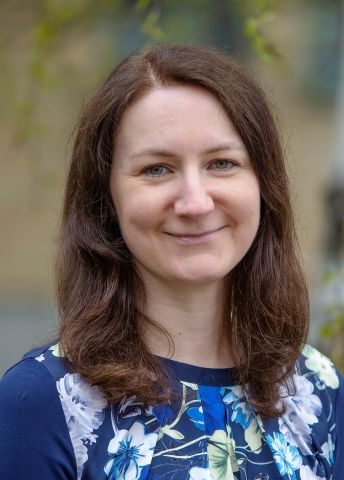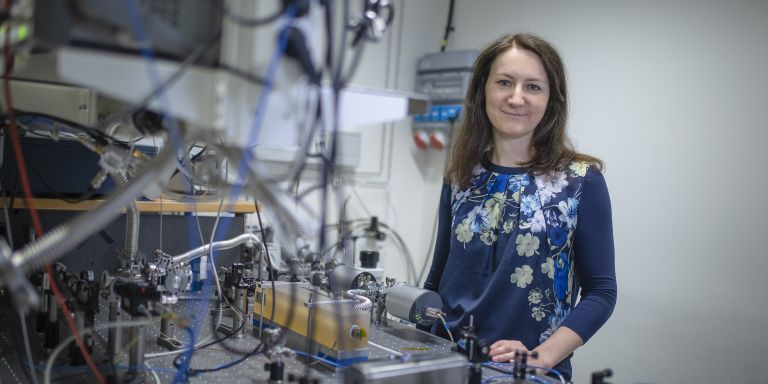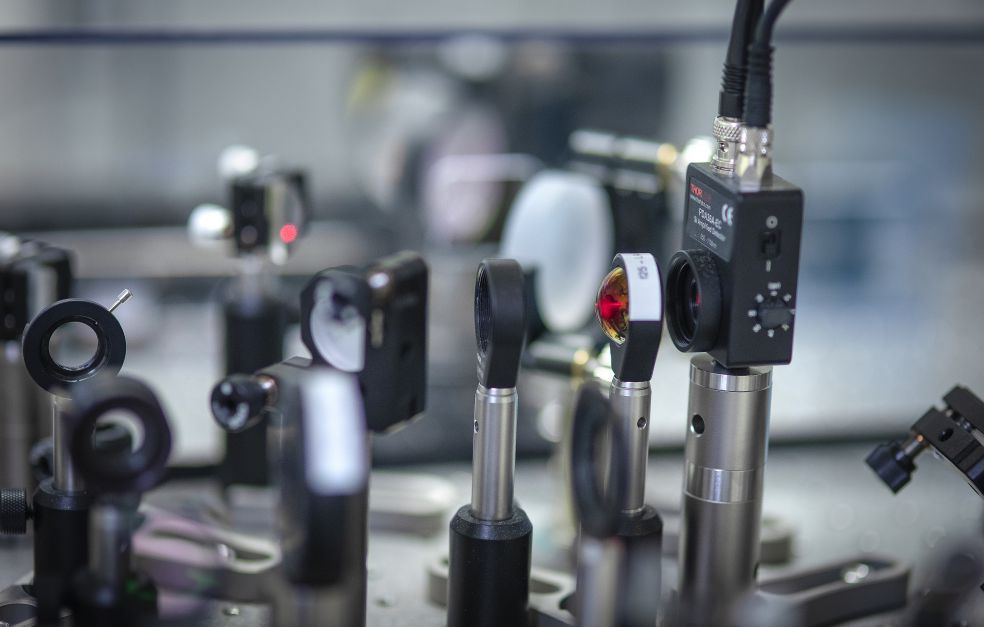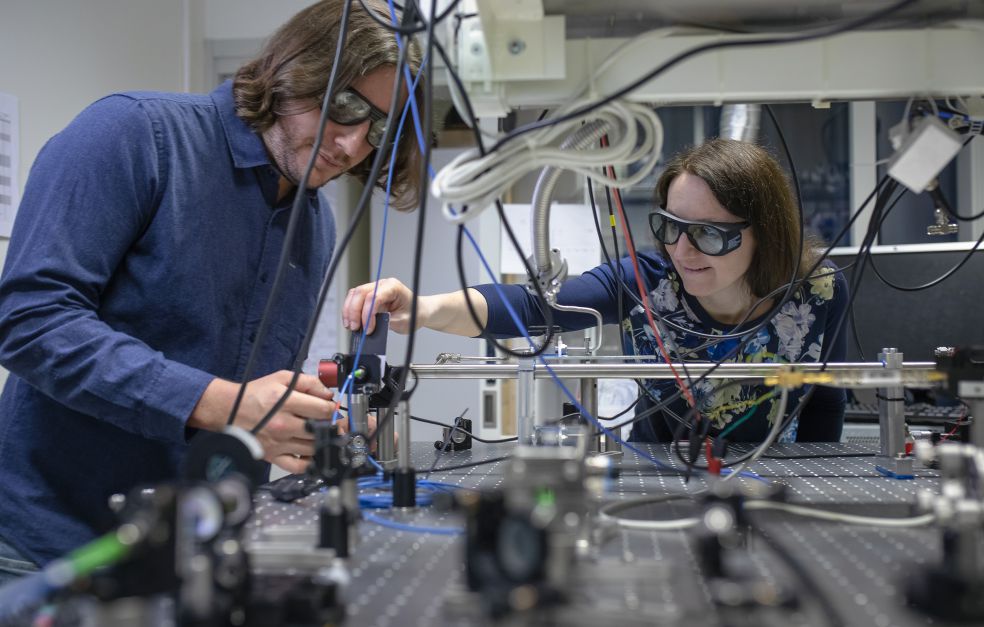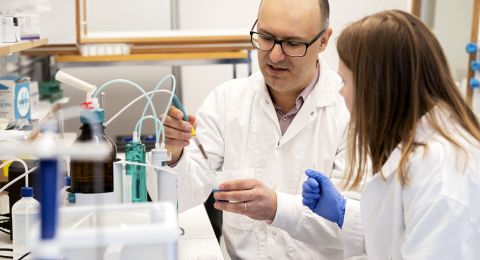Aleksandra Foltynowicz-Matyba develops spectroscopic methods of measuring transitions from high energy levels in small molecules discovered on extremely hot planets outside our solar system. Her findings will verify the accuracy of theoretical models used to interpret data from existing and future telescopes.
Aleksandra Foltynowicz-Matyba
Associate Professor of Physics
Wallenberg Academy Fellow, prolongation grant 2020
Institution:
Umeå University
Research field:
Precision spectroscopy using optical frequency combs
Exoplanets orbit stars other than our Sun. Many of them are as large as Jupiter, but orbit so close to their stars that their temperatures reach 700 degrees Celsius. There is hardly any chance of life existing on planets this hot. Yet studying them may yield unique information about the evolution of the universe.
Everything we know about planets outside our solar system comes from satellite- and ground-based observations.
“We can use spectroscopic methods to obtain information about the composition of the atmosphere, thermodynamic conditions, photochemistry and planetary formation,” explains Foltynowicz-Matyba.
Retrieving the information requires exact theoretical models of high-temperature spectra that have been confirmed by laboratory measurements. There is often a lack of such measurements even for relatively simple molecules.
Foltynowicz-Matyba, who is a Wallenberg Academy Fellow, is developing methods of measuring and identifying transitions from high energy levels of methane, ammonia and acetylene. She and her fellow researchers will generate data that will allow verifying theoretical models that are used to analyze spectra of hot exoplanets and other astrophysical objects.
“I feel I have the freedom to take my research projects in new directions.”
Their measurements are made using double-resonance spectroscopy with an optical frequency comb. A frequency comb is a laser that emits light in myriad colors, and may be described as a thousand lasers in a single beam. The colors are evenly spaced, like the teeth of a comb. The frequency comb uses all wavelengths simultaneously and can measure a huge number of molecular transitions simultaneously.
A double-resonance spectrometer with greater spectral coverage and better performance than ever before will be developed within the new project.
“This project gives me a unique opportunity to advance research involving spectroscopy to study molecular energy levels and transitions with a degree of accuracy not offered by any other method.”
Currently, the group is using the method to measure methane.
“We are still at the development stage, and are improving the performance of the method. But already now we can measure signals from very weak transitions.”
Ideas born at conferences
She grew up in Poznań in Poland, studied physics and enrolled at Umeå University as an Erasmus exchange student. It was one of the few universities she could apply to where she could study in English.
It was at Umeå that she met her husband, Piotr Matyba, who is also Polish and has an undergraduate degree in physics. They received their PhDs, moved to the U.S. as postdocs, and were not sure they would return to Umeå.
“Sometimes you end up somewhere else than you thought you would,” Foltynowicz-Matyba reflects.
That very day at the end of the semester, she has attended a group meeting with her PhD students and postdocs to review their conference presentations. The Covid-19 pandemic has caused that the conference must be held online, so the presentations have been prerecorded on video. But whatever the medium, the feedback process is the same.
“They send a first version, receive feedback, prepare a new version – just like when they write a paper. But the length of the presentation is critical – the videos have to be exactly twelve minutes long. If they’re thirteen minutes long, the extra minute has to go.”
She misses the opportunity to attend conferences and meet other researchers – to spontaneously make contact with new people.
Her latest project is the result of one such meeting.
She had developed a method of measuring molecular spectra using optical frequency combs with ultra-high resolution and sensitivity. When she presented the method at a conference, she met Kevin Lehmann, of the University of Virginia, an expert in experimental and theoretical molecular spectroscopy. He suggested that she combine the frequency comb with double-resonance spectroscopy. This gave her not only a new tool, but a whole new area of research.
Lehmann visited her group at Umeå for a couple of busy weeks, but it would take two years before they could publish their first results.
“We encountered a certain amount of resistance from the researchers making the scientific assessments. But already from the first demonstration we could see that our data were interesting. When we presented them at conferences, we met with positive responses from theoreticians in the field of astrophysics. New collaboration possibilities opened up.”
More accurate interpretations
Both NASA (the U.S. National Aeronautics and Space Administration) and ESA (the European Space Agency) will soon be launching new telescopes to study exoplanetary atmospheres using high-resolution infrared spectroscopy.
“Our project will eventually contribute to more accurate interpretations and a better understanding of atmospheric processes on distant exoplanets.”
Text Carin Mannberg-Zackari
Translation Maxwell Arding
Photo Mattias Pettersson
